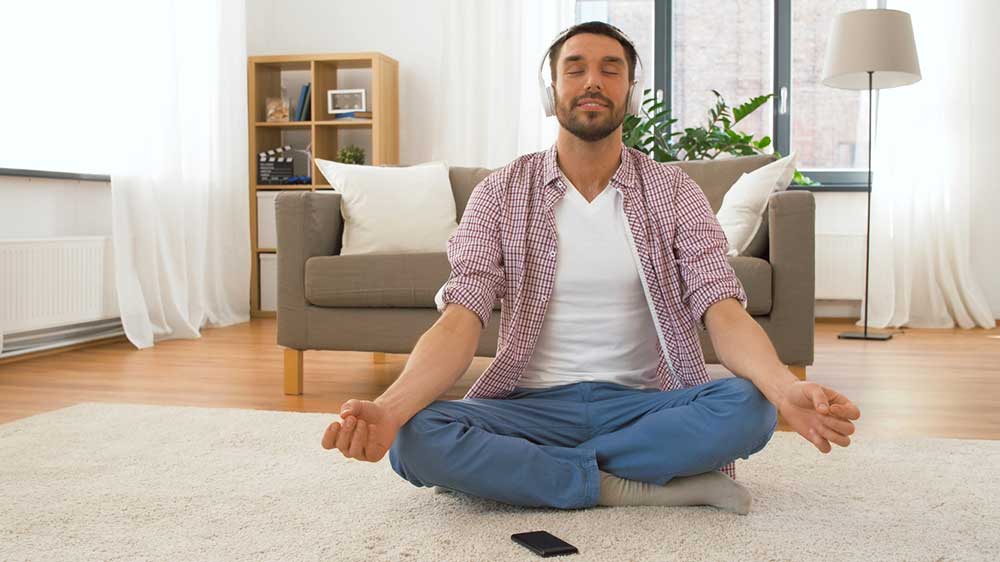What You Can Do at Home During COVID-19 for Your Health and Wellness
At Burlington Sports Therapy, we help our patients recover from their musculoskeletal injuries. We examine, we diagnose, we offer exercises and home strategies, and then we discuss and agree on clinical treatments that can speed up recovery. Right now is a very frustrating time. Due to the COVID-19 virus, we can’t do our jobs properly. The best we can do is offer exercises for home and we can answer questions. As we’ve told all of our existing patients, please don’t hesitate to reach out if you’re unsure of what to do with your injury. Email us. In the meantime, let’s consider the case of Bob and some general ways to improve a painful condition without even targeting any specific tissues.
Bob is a hypothetical patient with chronic lower back pain. Being a good Canadian, Bob is respecting the direction from the authorities, and he is staying at home to help stop the spread of the coronavirus. He is a little frustrated that he doesn’t have access to the clinical treatment strategies that normally help, but he understands the importance of self-distancing right now. Bob’s lower back pain has been particularly sore over the last few weeks. Although he has been given home exercises and knows a lot about self-management for his lower back pain, nothing seems to be working. He’s frustrated because he hasn’t done anything to cause this irritation of his longstanding lower back condition. Bob has been hanging around his house for a month, so it doesn’t make sense. Bob’s lower back pain usually has an intensity of around 3/10. It often fluctuates depending on his activity, but at the moment, it’s more of a 6/10.
In this case, it is highly unlikely that Bob has new tissue damage. The structure of his spine has likely not changed since the pain worsened because Bob didn’t do anything new. In theory, if we had an MRI of Bob’s back before and after this irritation, there would likely be no difference. So, what has happened? Most likely, it’s just a situation in which Bob’s lower back pain has been sensitized. Our nervous system does a lot of things behind the scenes that we don’t realize. In this case, Bob’s nervous system has decided to turn up the volume of his pain, even though his condition hasn’t changed at all. It’s no more severe than it ever has been. There really is no need for an increased pain signal. So why did the volume get turned up?
There are many different things that can turn up the volume on pain, and the list is different for everyone. Surprising to many people, these factors do not have to be physical factors. They don’t have to be stretches, movements, or postures. They can be anything that our nervous system has to experience and interpret. Stress, anxiety, lack of sleep, poor health, and general sickness are all things that can sensitize our nervous system and turn up the volume of pain. For Bob, the sensitizers are likely the stress of being stuck at home with physical distancing, the lack of exercise, stress related to not working, and all the fast food he’s been eating!
This can be very empowering if we choose to view it that way. Yes, clinics are closed right now and it’s frustrating for all of us. However, there are many ways to try and turn down the volume of pain. We can attenuate our nervous system. Bob has been staying up late and finds that due to the stress, he’s not sleeping. He’s been eating fast food and has gained a lot of weight. He feels tired, sluggish, and down on himself. He hasn’t done any exercise and feels weak and out of shape. Bob doesn’t feel like the regular Bob. Let’s now contrast that with enlightened Bob, who knows a lot about pain science. This Bob has decided to maintain a good sleep schedule. He goes to bed at a reasonable time and he sleeps in a little right now because he has the time. During the day, he maintains a balanced diet and avoids drinking alcohol. He’s not trying to lose weight necessarily, but he’s cut out the fast food and is trying to eat “clean.” As a result, he feels better about himself and his mind feels clearer. He has more energy. During the day, Bob has been doing some body weighted workouts at home in order to burn more calories, strengthen his muscles, and reap the benefits of an endorphin release. This has had a very positive impact on his pain pathways. Bob feels better about himself. He’s reading during the day instead of just playing video games, and he’s even taken some time to try meditation. He’s also found that this settles his mind and seems to turn down the volume on his pain.
If we look at both Bobs, Bob number two is in a much better situation. It is likely that his pain experience will be much easier to handle than the sluggish, depressed, and stressed Bob. The variables that influence our pain will be very individual. Make a list of the things that you think are “negatives” in your life. Don’t worry about not being able to change some of them because we’re just trying to tip the scale in our favour. Some better sleep hygiene, a little more exercise, and clean eating are good starting points that just take time and effort. Perhaps some meditation and mindfulness will also help. Reach out to a friend who is lonely and have a conversation that puts a smile on your face. Tidy up a messy closet that gives you a feeling of accomplishment. There are many ways to turn down the pain volume… you just have to look for them!
—
Dr. Kevin McIntyre B.Kin, DC
Clinic Director at Burlington Sports Therapy








